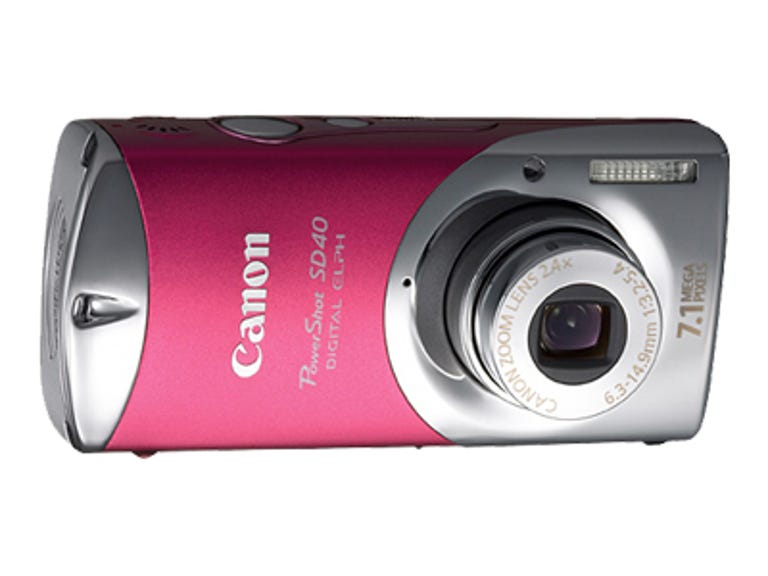 Why You Can Trust CNET
Why You Can Trust CNET Canon PowerShot SD40 review: Canon PowerShot SD40
Its small size makes it an attractive pocket camera, but its speed and image quality issues are too great to ignore.
That's the case with the Canon PowerShot SD40. Canon took its supersmall PowerShot SD30, dropped in a 7-megapixel sensor and new image processor, threw in a few handy accessories, and called it a day.
The Good
The Bad
The Bottom Line
The camera is small and stylish, using the same body as its predecessor, the SD30. Its candy bar-size form is all metal and comes in a variety of oddly named colors, such as Olive Grey and Precious Rose. At less than an inch thick and weighing only 4.3 ounces, the SD40 fits easily into almost any pocket.
Alas, small size means small features in the SD40's case. The viewfinderless camera has only a 1.8-inch LCD, and it uses a relatively narrow angle of view for the 38mm-to-90mm-equivalent lens, the same as the SD30. Beyond the higher resolution, the SD40's most notable improvement over the SD30 is its new Digic III image processor. Canon claims the Digic III processor increases image quality, performance, and battery life, but we didn't notice any significant improvement over the SD30. If anything, performance was a bit sluggish, though that might be simply because of the camera's higher resolution. The SD40's sensor can also bump up its sensitivity to ISO 1,600, a fair improvement over the SD30's ISO 400 ceiling. Finally, the camera features SDHD support, allowing the use of 4GB and larger SD memory cards.
Though it doesn't have many new features, the SD40 includes some extra accessories the SD30 lacked. The camera now comes with a small cradle to rest it on while charging, plus an infrared remote control. The cradle's a nice home for the camera, but the remote has more limited uses than we typically see; it works on the camera only while it's on the cradle and only for reviewing, uploading, or printing images. The remote can't be used for shooting.
We recorded some lackluster performance in the tiny shooter. After taking 1.3 seconds to wake up, we could snap a shot once every 2.3 seconds. With the onboard flash enabled, that wait more than doubled to 5.2 seconds. Shutter speed was acceptable but not breathtaking; the shutter lagged 0.5 second in bright light and 1.4 seconds in dim light. Burst mode was very slow, sustaining only 1.2 frames per second.
Image noise is the SD40's biggest problem. Speckles and grain became visible at ISO 100 and rendered photos almost unusable at ISO 800 and above. The camera's sensor may be able to hit ISO 1,600, but at that setting, photos look like they're covered by a thin layer of sand. Colors were faithfully captured, though the automatic white balance tended to give indoor lighting a marked yellow pallor.
The Canon PowerShot SD40 proves that sometimes beauty is only skin-deep. Its small and stylish body is pleasing to look at, but its sluggish performance and heavy image noise make it a poor choice for a regular shooter. If you really want a small and stylish digital camera, you might want to check out Sony's Cyber Shot DSC-T10, or Casio's Exilim EX-Z850 instead. Both are slender, similarly priced cameras without the performance and image issues of the SD40.
(Shorter bars indicate better performance)
| Typical shot-to-shot time | Time to first shot | Shutter lag (typical) |
(Longer bars indicate better performance)
